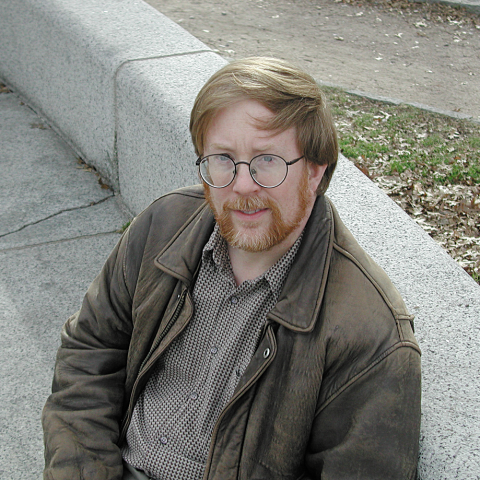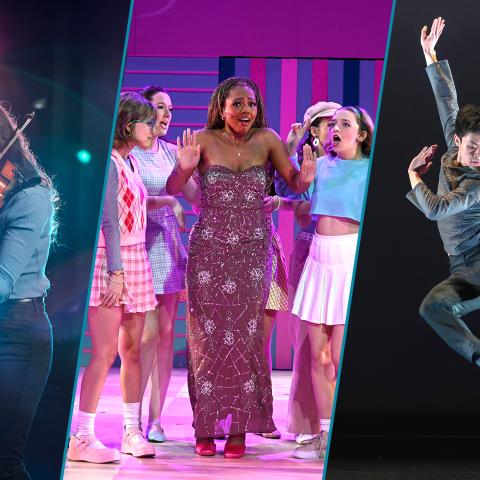Lessons Learned at the Willow

Ed Hazell is a freelancer writer whose work frequently appears in the Boston Phoenix, Jazziz, and Coda. He authored the book Berklee: The First Fifty Years. Hazell now has a wife and a son and doesn’t get out to clubs as much as he used to.
The Willow was not a great place for music. It wasn’t much to look at, that’s for sure. As I remember it, there were mirrors on the wall opposite the stage and all around the room, up near the ceiling there was a red vinyl or naugahide border adorned with empty LP covers, most of which fell off as the years passed. The room—shoebox shaped with the narrow end facing the street—was awkward at best for the audience. The stage was halfway down the right-hand wall as you walked in, but the space was so narrow that if you sat in front of the band you could spend the night with a saxophone bell in your face or dodging a trombone slide.
The seats at the front of the room were freezing in the winter when the door opened, and you couldn’t see much from the seats in back, because the piano blocked your view. Besides, if you sat in the back, noise from the “townie” side of the bar next door almost always drowned out the music. It was a good bet that during the bass solo in the last set, when everyone next door was really baked, they’d crank up Frank Sinatra’s “My Way” on the jukebox and sing along. But the worst thing by far about the room was the air. All its oxygen seemed to have been sucked out of it and replaced by stale beer fumes and cigarette smoke; the nasty odor clung to your clothing long after you had left the place. But along with the foul air, the noise, and the indifferent piano, you could hear jazz there seven nights a week.
In the early 1990s, I lived around the corner from the club, just before it shut down for good. I was “between girlfriends,” living alone, and working as a freelance writer out of my apartment. At least once a week, feeling lonely after a day in the house with only my cat for company, I would walk over to the Willow to have a beer (Miller or Budweiser in a bottle, sometimes a Pabst; there were no microbrews at the Willow) and catch the last set by whoever was there.
I usually had no idea who was playing. Printed schedules were available sporadically—sometimes I’d have five of them on my table, sometimes there wouldn’t be any for weeks on end. But if Brian Walkley, who booked the room, was an erratic publicist, he was a refreshingly open-minded impresario. It didn’t seem to matter to him whether the musicians were polished veterans or beginners, whether they played hard bop or free jazz or fusion, whether they were famous or unknown. Just as long as they wanted to play—and they were willing to play for the door.
So I learned to walk in with an open mind and to sit, listen, and see what happened. I learned a very important first lesson at the Willow: instead of worrying about who was playing and what style of music they played, I only paid attention to what was happening on the bandstand. Keeping an open mind meant that I endured more than my share of clueless versions of standards, self-indulgent or uninspiring solos, banal originals, and sloppy ensemble work. That was the chance you took at the Willow. But listening to bands struggle also drove home to me how hard it is to play well (not being a musician myself) and that truly great players deceive you by making it look easy.
Then there were nights, especially when the Fringe or the Charlie Kohlhase Quintet played, when I knew I was listening to some of the best jazz in the country. One Sunday night, I heard a pianist who claimed after the set that he’d played with Bird in New York in the early 1950s. He looked old enough for it to be true. Whether truthful or not, he played with irrefutably authentic bebop fire the whole night. I don’t remember his name. I remember hearing drummer Bobby Ward there with saxophonist Henry Cook and sitting in disbelief at such an enormous talent who was so little known. I saw pianist Lowell Davidson, whose fragile mental state never stopped him from making astonishing free jazz, although he never achieved much fame.
I remember trumpeter Raphe Malik’s free jazz quintet playing in a frenzy of mystical energy. I also vividly recall the ineffably relaxed swing of Alan Dawson on vibes. He was so good that I don’t remember who else was in the band. There was also a summer Sunday afternoon when pianist James Williams and saxophonist Billy Pierce, who had toured the world with the likes of Art Blakey and Tony Williams, played a laid-back couple of sets with a quartet to an audience of less than a dozen. Sometimes I couldn’t help wondering what on earth this music was doing in an isolated, grimy little club that pretty much exemplified “the middle of nowhere.”
I think the most valuable lessons I learned came from listening to pianist Jeff Covell’s trio, although I never told him so. For a year at least—maybe longer, the details grow dim as the years advance—he and bassist Rich Appleman and drummer Steve Turner played on the last Sunday of each month. The first time I walked in, there was no one in the room except the band. I asked them if they were through for the night. Jeff looked over at the other two, and they shrugged. “No,” he said, “we’ll play a couple more.” And they really played. They listened hard to one another, and their responses were subtle and deeply felt; they made music together. I’ve rarely heard other musicians anywhere play with that much mutual respect, warmth, and intuitive rapport. It was beautiful. And it was not the only time I saw that happen. I came back to hear them as often as I could, and most of the time I was the only one there for the last set. Yet they always played when I showed up as if they were at the North Sea Jazz Festival or something.
Nights like those taught me something about the importance of making music that I couldn’t have learned anywhere else—not in a posh hotel jazz club, or on a crowded festival stage, or a music school recital, or on a CD. When you came right down to it, there was no rational reason to play at the Willow, and an audience of one isn’t much motivation to play. But at the Willow, I learned that making music was what counted. Making music for the love of it really was more important to a certain types of players than inconsequential things like money, fame, prestige, or the size of the audience. I learned that it’s good, maybe even necessary, to have something more important than those things, something that pure, in your life.
Music made for the sheer love of it (and there was no other reason to play at the Willow!) affirms something essential for the people who make it. I know that on nights when the music was good, I’d go home from the Willow feeling a little less frazzled, a little more at peace, and a little less lonely. It affirmed for me a deeply held, fundamental love of life that too often gets blurred or muffled. I’m not even aware of it, until music reaches into me and cuts away all the worldly distractions and lays it bare. Most amazing of all, it seems that this deepest part of us can be touched and awakened by music anywhere—even at a place like the Willow.




